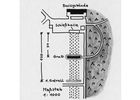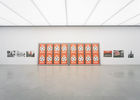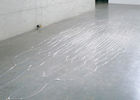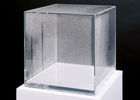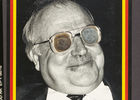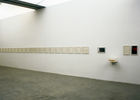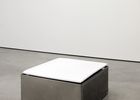Hans Haacke
Biographie
Hans Haacke was born in Cologne, Germany, in 1936. He has lived in New York since 1965. He studied at the Staatliche Werkakademie in Kassel, Germany, from 1956 to 1960, and then from 1961 to 1962 at the Tyler School of Fine Art, Temple University, Philadelphia, USA. From 1967 to 2002 he was professor at Cooper Union in New York, USA. In 2019 the New Museum, New York, dedicated a major retrospective to him. He has been awarded numerous prizes for his work including the Golden Lion of the Biennale di Venezia in 1993 (which he shared with Nam June Paik), the Arnold-Bode-Prize in 1919 and the Goslarer Kaiserring in 2020. (Sabine Breitwieser/Doris Leutgeb)
Additional biography
Haacke initially became involved, initially with physical and biological systems, with living animals, plants, the physical states of water, and wind. He presented his works for the first time in a solo exhibition entitled "Wind and Water" at Galerie Schmela, Düsseldorf, Germany in 1965. A year later he introduced the legendary Condensation Cube (1963-65) at the Howard Wise Gallery in New York. There, in 1969, Haacke also carried out his first visitors’ polls in the Gallery Goers’ Birth Place and Residence Profile which would be followed by a series of further projects of this kind. At the same exhibition, he also featured Circulation (1969), a variable network of plastic tubes through which water was being pumped. His solo exhibition, scheduled to go on at the Guggenheim Museum in New York in 1971 was cancelled as the director at that time wanted to censor three of his works. Haacke’s artistic practice grew increasingly into a concentrated analysis of and reflection on socio-political structures by employing investigative methods to focus attention on the machinations of individual politicians and companies. His pro-jects have occasionally resulted in very heated debates, which Haacke considers to be a part of his artistic work. For his exhibition at the Generali Foundation in 2002, originally intended as a major retrospective, Hans Haacke decided to concentrate on "a single problem area, how the country [Austria] deals with its history and national identity, two questions, which continue to cause people to get hot under the collar in both Austria and Germany, even today." Two of his works, created in 1988 and 1996 in Graz as part of earlier projects on the Nazi era in Austria, were shown along with his more recent work for the "Reichstag" in Berlin, in addition to a new installation created specifically for this exhibition, entitled "Mia san mia"(We are who we are). (Sabine Breitwieser) Compared to other museums the Generali Foundation Collection owns an exceptional group of works by Hans Haacke: "Condensation Cube" (1965-1967), "Ice Table" (1967) and "Circulation" (1969) put the focus on water in three different physical states and are typical examples of his early works. In two extensive installations, Haacke left the field of biological and physical principles in favor of his critical reflection of social systems. In "Visitors’ Profile, Directions 3: Eight Artists, Milwaukee Art Center, June 19 through August 8" (1971) he collects the demographic profiles of the visitors and their topical social and political issues. In "And You Were Victorious After All" (1988) he deals with the NS-past of the city of Graz at a historical central place: Am Eisernen Tor (Column of the Virgin Mary). His "Proposal for a Memorial to the Victims of National Socialism at the Military Target Practice Range" "Feliferhof" in Graz completes the group with a project, which was unfortunately never realized. (Doris Leutgeb)
Artist's books
- Hans Haacke. Helmsboro country [PRINT]. Ed. John Weber Gallery. New York, 1990.
KM Haacke Hans 21 -
